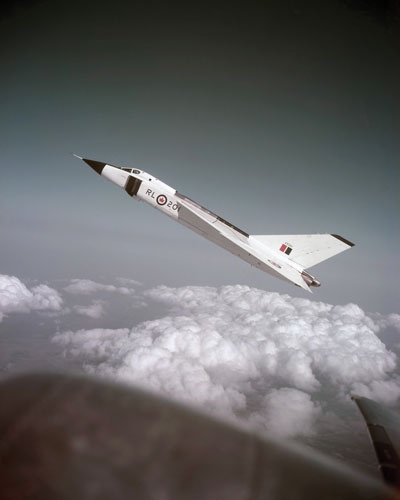
News
Waypoint: Return of an aviation legend?
There were several reports in September that an effort was afoot to make the vaunted Avro Arrow fly again.
October 31, 2012 By Rob Seaman
There were several reports in September that an effort was afoot to make the vaunted Avro Arrow fly again. As an aviation enthusiast, I would certainly love to see this happen, but seriously? Had former prime minister John Diefenbaker reached out from his grave and undone his death sentence on this aircraft and the Canadian aviation industry as a whole?
 |
|
| The costs for tooling, redesign, testing and such would be astronomical. PHOTO: Marc-Andre Valiquette collection
|
Most of us know people who were involved in the Arrow. Without question this aircraft was unique and, if put into production, would have set Canada amongst the leaders in aircraft design and manufacture in the world. I remember an engineer working with my father back in the late ’70s – ex-Arrow – came into the office and announced with a smile that “the Americans just hit Mach 1.95 in the YV-17” (predecessor and prototype to the F-18). He followed this by noting, “Heck, we were doing that with the Arrow using the prototype engines way back.” There was no question Canada was on the cusp of aviation greatness.
Fast-forward to today and once again Canada is seeking its next generation of front-line defense aircraft. And according to an article in Maclean’s (Sept. 9), “The plan to build an updated Arrow in Canada instead of buying into an international deal for a fleet of F-35s was originally put before the Harper Conservatives in 2010 by a company called Bourdeau Industries, which has offices in the U.K. and Canada.”
The proposal, said the article, “suggested the plane could fly 20,000 feet higher than the F-35, soar twice as fast and would cost less. The total cost of the Arrow program would be $11.73 billion, compared to the $16 billion the federal government says the F-35 program will cost.” (The auditor general and parliamentary budget officer peg the true cost of the new stealth fighters at closer to $25 billion.) The article notes, “The Arrow project would also create a made-in-Canada plane and an industry that would add thousands of jobs and billions of dollars to the Canadian economy.”
That said, the F-35 project is not without its Canadian benefits. As Rod Jones, executive director of the Ontario Aerospace Council, says, “Canadian companies – many of them in Ontario – have won a significant number of contracts with Lockheed Martin and other lead companies (BAE Systems, Northrop Grumman, etc.) on the F-35 program. Since the total build is expected to be at least 3,000 aircraft, the revenue opportunity will be very significant for those Canadian companies. Not many aircraft programs reach that total, for sure.”
In comparison, the Arrow proposal calls for building just enough for Canadian needs – 65 if it were a strait swap for the current F-35 discussions. Sell more outside Canada and the plan becomes more lucrative. The costs for tooling, redesign, testing and such would be astronomical.
In point of fact, the only real similarity between the proposed new Arrow and the original Arrow might, in the end, be the outward look. As for end cost what a company estimates each jet will cost and what that cost ends up to be are usually two different numbers. Another key point is the fact that production of the F-35 is much closer to the 2020 deadline necessary to replacing the aging CF-18s than a built-from-scratch Arrow. Can the military squeeze out extra time from the existing CF-18 fleet? While in good shape and well maintained, their “best before date” has most likely been rejigged a few times already.
The Globe and Mail reported Sept. 24 that “the Harper government is embarking on an ambitious effort to develop a Canada-first military purchasing strategy – one that aims to funnel as many procurement dollars as possible to domestic firms with the potential to be leaders in their field.” According to the Globe, “Over the past 30 years, Canada has shied away from using defense policy to promote and build domestic industries. In the case of major equipment buys, for instance, it has often relied on foreign contractors to share work with domestic firms in exchange for winning the job.
Obviously, Ottawa is not planning to spurn foreign suppliers. But it wants to be smarter about backing Canadian industry where possible – funnelling more of the $240 billion the government plans to spend on military acquisitions to domestic suppliers.
Yes, it would be very emotional and a great source of national pride to see the Arrow fly again, but I have to side with those who see it as nostalgic but unrealistic. As for the F-35 do we really need something that expensive and high end? More than one person has asked why not the updated and current version of the F-18 Super Hornet, an efficient and capable alternative.
The bottom line is, proper analysis needs to be done before significant Canadian tax dollars are spent on the new F-35. As for the re-emergence of a next gen Arrow? Sorry
Arrow fans – can’t see it happening.
Rob Seaman is a Wings writer and columnist.